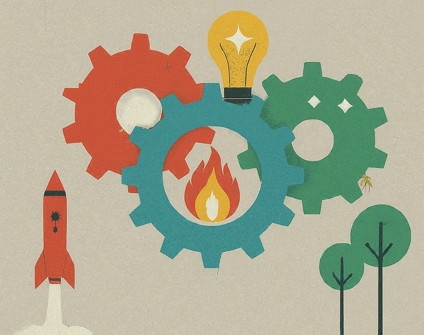Ever felt stuck, unable to turn your dreams into reality? But what if I told you there’s a powerful tool right at your fingertips, one that can supercharge your journey to success? Enter the world of visualization – your hidden catalyst for transforming dreams into tangible results.
Let’s face it: we’ve all been there. You have a burning desire to achieve something great, but it feels just out of reach. Maybe you want to land that dream job, get in shape, start a successful business, or travel the world. Sound familiar? The problem isn’t your ambition – it’s the fuzzy nature of these goals. Without clarity, your dreams become like trying to navigate a maze blindfolded. You might be moving, but are you getting anywhere?
Picture this: You tell yourself, “I want to get in shape.” Great intention, right? But what does that mean? Are you aiming to lose 20 pounds, run a 5K, build muscle mass, or improve your flexibility? Without specifics, your brain doesn’t know what to focus on. It’s like telling a GPS “Take me somewhere nice” instead of inputting an exact address. You might end up wandering, feeling frustrated and unmotivated.
Here’s where visualization comes in – and no, we’re not talking about wishful thinking or daydreaming. Visualization is a powerful cognitive tool that primes your brain for success. It’s like creating a mental rehearsal for your goals, and science backs it up. Research shows visualization can improve focus and motivation, athletes use it to enhance physical performance, and it can boost confidence and reduce anxiety.
How to Visualize Like a Pro:
Ready to supercharge your dreams? Let’s dive into some practical visualization techniques:
1. Engage All Your Senses
Don’t just see your success – feel it, hear it, smell it! Let’s say you’re visualizing opening your café. Picture the warm, inviting interior and smiling customers. Imagine the buzz of conversation and the hiss of the espresso machine. Conjure up the aroma of freshly baked pastries and rich coffee. Envision the smooth texture of a latte cup in your hands. The more vivid and multi-sensory your visualization, the more real it becomes to your brain.
2. Get Specific with Details
Vagueness is the enemy of progress. Instead of just visualizing “success,” define what that looks like in concrete terms. Set a specific date for achieving your goal, identify key milestones along the way, and visualize yourself overcoming potential obstacles.
For example, if your goal is to run a marathon, don’t just picture crossing the finish line. Visualize the exact date and location of the race, your training schedule leading up to the event, the feeling of your feet hitting the pavement during the race, and the overwhelming sense of accomplishment as you receive your medal.
3. Make It a Daily Habit
Consistency is key. Set aside time each day for visualization. Start with just 5-10 minutes a day in a quiet, comfortable space. Use guided visualization apps or videos if you need help getting started. Pro tip: Combine visualization with your morning routine or pre-bedtime ritual for maximum impact.

Turbocharge Your Visualization Practice
Want to take your visualization game to the next level? Try these advanced techniques:
– Create a Vision Board: A vision board is a visual representation of your goals and dreams. It’s like a physical manifestation of your visualizations. Use images, quotes, and symbols that represent your aspirations. Place it somewhere you’ll see it daily and update it regularly as your goals evolve.
– Practice Visualization Journaling: Combine the power of visualization with reflective writing. Describe your visualizations in vivid detail, explore the emotions associated with achieving your goals, and use prompts like “What does my ideal day look like five years from now?”
– Use Positive Affirmations: Pair your visualizations with powerful, positive statements. “I am capable of achieving my dreams,” “I attract success and abundance into my life,” and “I overcome obstacles with confidence and creativity” are great examples. Repeat these affirmations during your visualization practice to reinforce positive beliefs.

Visualization isn’t some mystical practice – it’s a practical, science-backed tool for achieving your goals. Clarity is important – get specific about what you want. Engage all your senses for maximum impact and make visualization a daily habit. So, what are you waiting for? It’s time to stop wishing and start visualizing!




